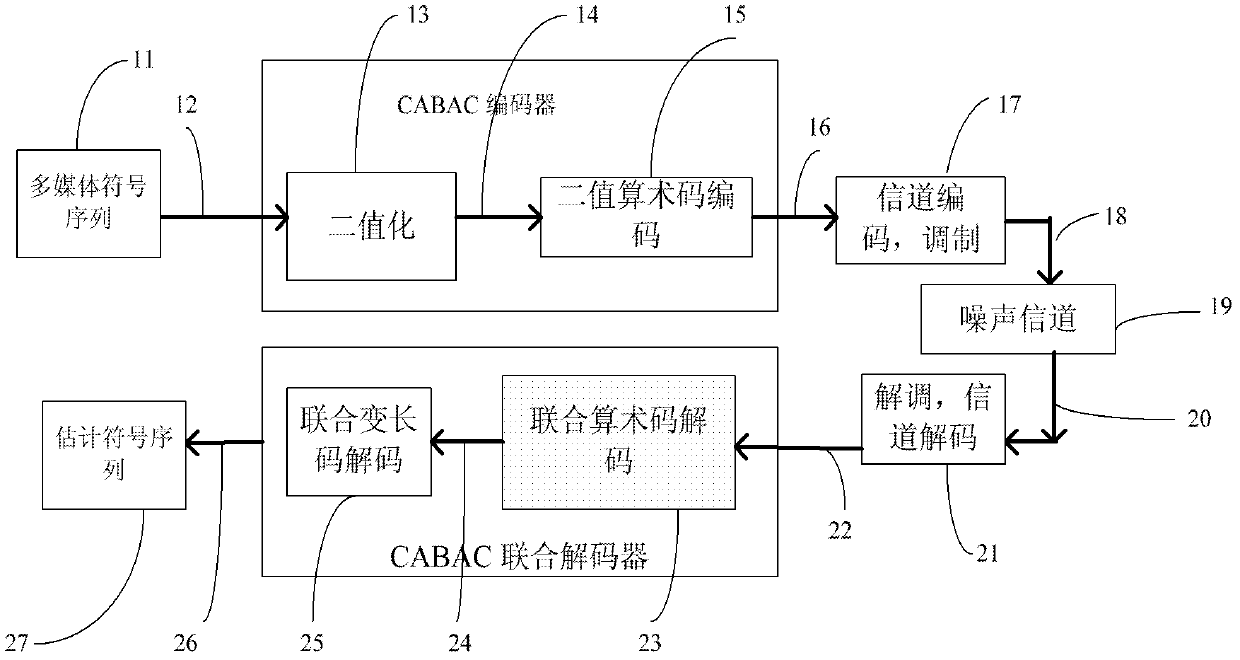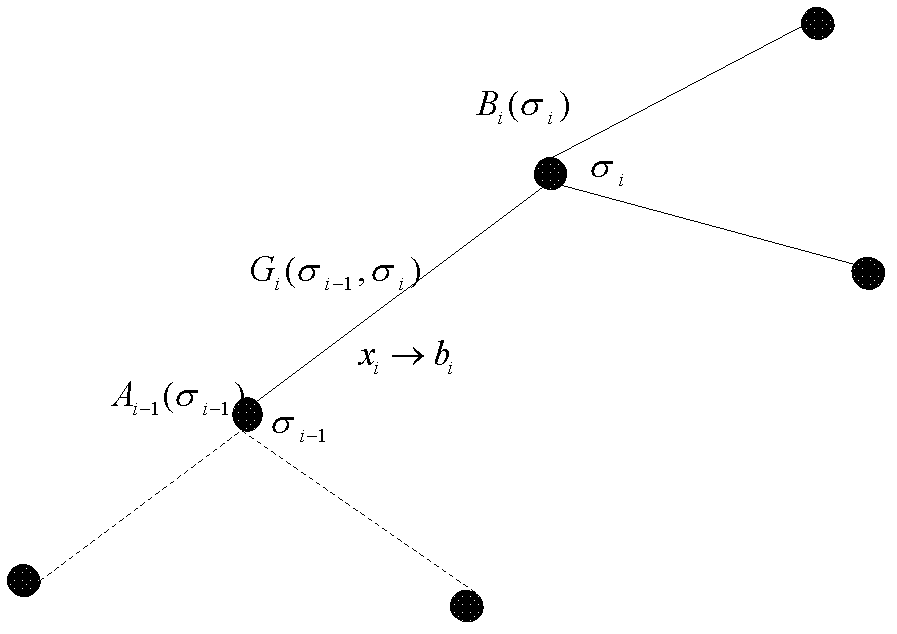A Joint Source-Channel Decoding Method Based on Variable Length Codes and Arithmetic Codes
A channel decoding and variable-length code technology, applied in image communication, digital video signal modification, pulse modulated TV signal transmission, etc., can solve the problems of reducing the quality of reconstructed video, only considering digital joint decoding, errors, etc.
- Summary
- Abstract
- Description
- Claims
- Application Information
AI Technical Summary
Problems solved by technology
Method used
Image
Examples
Embodiment Construction
[0027] The present invention will be further described below with reference to the drawings and specific embodiments.
[0028] The present invention proposes a joint source channel decoding scheme based on arithmetic codes and variable length codes, so that it can be applied to the actual video compression standard H.264, HEVC and image compression standard JPEG2000 transmission system. Such as figure 1 As shown, at the transmitting end, the redundant multimedia symbol sequence first passes through the CABAC encoder, which includes two parts, a binary processor and a binary arithmetic code encoder. The output of the CABAC encoder is a binary bit The sequence is then changed and sent to the next-level channel coding and modulation module, which is channel-coded and modulated into a waveform suitable for transmission in the wireless channel for transmission. After passing through the noise channel, at the receiving end, the receiving antenna first demodulates the received informati...
PUM
 Login to View More
Login to View More Abstract
Description
Claims
Application Information
 Login to View More
Login to View More - R&D
- Intellectual Property
- Life Sciences
- Materials
- Tech Scout
- Unparalleled Data Quality
- Higher Quality Content
- 60% Fewer Hallucinations
Browse by: Latest US Patents, China's latest patents, Technical Efficacy Thesaurus, Application Domain, Technology Topic, Popular Technical Reports.
© 2025 PatSnap. All rights reserved.Legal|Privacy policy|Modern Slavery Act Transparency Statement|Sitemap|About US| Contact US: help@patsnap.com



